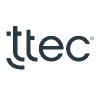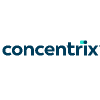In a candidate-driven market, employers and HR departments have enough to deal with without the additional headache of reducing employee turnover. Retaining existing talent can help cut recruitment and training costs, while also boosting reputation and brand image.
But what if your top talent isn't performing to the best of their abilities?
This is where a Performance Improvement Plan (PIP) comes in. Yet, the majority of performance improvement plans still fail to lead to any improvement in performance. Often perceived to be the first step towards disciplinary or dismissal, it’s clear there’s an art to creating a positive PIP for reducing staff turnover.
In this article, we’ll cover performance improvement plans, their numerous benefits, the best ways to create an effective employee performance improvement plan, and some helpful examples of how to write one to retain the best talent for longer.
What is a Performance Improvement Plan (PIP)?
A Performance Improvement Plan (PIP) is a tool that helps employers and HR departments address performance issues or specific areas where employees aren’t meeting company expectations. It doesn’t bear thinking about, but PIPs can also act as a shield against unfair dismissal claims.
Whether they're exempt or non-exempt employees, if they're struggling to meet expectations, employers can issue a performance improvement plan to give them the chance to improve. Employers can make sure they're meeting their legal obligations by understanding the difference between exempt and non-exempt employees.
What are the benefits of PIPs?
Improving performance and helping to reduce employee turnover are just two of the advantages employers can look forward to by putting an effective PIP in place. Other notable benefits include:
-
Clearer expectations
-
A structured approach to improvement
-
A supportive working environment
-
Opportunities for focused employee development
-
Enhanced employee engagement, accountability, and motivation
-
Improved communication and emotional intelligence
-
Legal protection for employers
-
A boost in company culture
-
Time and money savings.

Performance Improvement Plans can also help customers. Enhancing product or service quality and improving customer service through training, PIPs have the power to lift sales revenues, increase customer referrals, and improve customer relations too.
10 things you should always include in a performance improvement

1. Identify root causes for employee turnover
One of the main reasons for employee turnover is a lack of purpose. Other reasons for staff leaving are being overworked, poor management skills or company culture, lack of recognition, and no space for growth. These can all add up to reduced innovation, increased chance of burnout, and higher turnover rates.
To reveal the underlying factors fueling employee turnover, the first port of call is to conduct a thorough analysis. Effective ways to do this include:
-
Reviewing exit interviews
-
Analyzing employee feedback
-
Examining turnover trends
-
Conducting surveys/assessments.
In gathering this information, look for common patterns that will help you identify reasons for turnover. For example, perhaps some employees studied at a university in Australia and struggled to adapt to the American work culture. Other employees may say that remote working has made them feel disconnected from colleagues. In both of these situations, it could be that you need to address the team’s communication skills.
2. Set clear goals
Clarity is the key to an effective performance improvement plan. At the end of the day, your plan should be easy-to-follow for managers and employees alike.
To set clear goals with a PIP, you should:
-
Identify and itemize performance issues, e.g., productivity, communication skills, and company policies.
-
Use SMART Criteria to set goals; Specific, Measurable, Achievable, Relevant, and Time-bound.
-
Prioritize goals based on impact.
-
Break goals into manageable, bite-sized chunks.
-
Provide coherent examples to clearly outline expectations.
-
Communicate goals clearly.
-
Encourage employee input and agreement.
-
Regularly monitor the progress towards achieving these goals and provide ongoing feedback and support, recognizing successes and addressing any challenges along the way.
-
Be flexible in adjusting goals as needed, e.g. circumstances change, unrealistic goals set, etc.

3. Establish turnover metrics
To identify key indicators that reflect turnover rates and related factors, you can establish effective metrics within your PIP by:
-
Determining relevant turnover metrics, e.g., overall turnover rate, voluntary turnover rate, involuntary turnover rate, turnover by department or team, and turnover reasons.
-
Collect historical data on turnover rates and related metrics to define baseline metrics for comparison.
-
Set realistic target goals for reducing turnover rates based on the data, company goals, and industry benchmarks.
-
Consider other performance metrics that may affect employee turnover, e.g., employee engagement scores, employee satisfaction surveys, performance appraisal ratings, and training participation rates.
-
Implement reliable and compliant data collection methods, e.g., human capital management software (HCM), performance evaluations, employee surveys, etc.
Directly linked to reducing employee turnover, Human Capital Management is being used by savvy hiring teams to boost employee growth and productivity. So, if keeping your employees feeling connected is important to you, it's worth looking into what is human capital management in more depth.
4. Develop retention strategies
Now it's time to develop a targeted strategy based on the data drawn from your turnover root causes and company goals. Effective strategies to consider to help reduce turnover rates include:
-
Making improvements to recruitment and hiring processes, particularly when it comes to Gen Z job seekers just starting their careers.
-
Focusing on enhancing employee engagement and satisfaction.
-
Offering training and development opportunities.
-
Revamping leadership and management practices.
-
Implementing retention incentives, e.g., flexible work schedules, allowing employees to work from home, wellness perks, and discounts.
Investing in a corporate wellness app development can provide employees with convenient access to health resources, fitness tracking, and personalized wellness programs, demonstrating the company's commitment to their well-being and potentially reducing turnover.
Once specific retention strategies are locked into place, you can maintain a highly skilled and engaged workforce with ease and finesse.
5. Assign responsibilities
To clearly define roles and responsibilities for putting the PIP in place, it’s time to decide on:
-
Who will be in charge of overseeing the plan – e.g. supervisors or managers, human resources (HR), trainers, mentors, or other colleagues?
-
Are there any specific tasks or initiatives that teams or individuals will be accountable for carrying out? This includes providing guidance, monitoring progress, ensuring compliance with company policies and procedures, and facilitating communication between stakeholders.
Once you know this, you can move on to the next steps towards lessening employee turnover.

6. Provide resources
Budget, time, technology, and staff members are all essential resources that need to be allocated correctly to smooth the launch of the PIP.
Examples to consider include investing in technology upgrades, coaching programs, and other initiatives designed to improve employee retention and satisfaction. After all, job dissatisfaction in Europe is higher than in other regions, with only 14% reporting positive workplace engagement. You can buck the trend with a structured performance improvement plan.
7. Communicate effectively
Once the PIP is complete, ensure it is communicated to all the relevant parties – stakeholders, managers, supervisors, and employees.
For maximum effect, make sure roles, responsibilities, goals, strategies, timelines, and expected outcomes are clearly and effectively specified in your plan. Helping to prevent misunderstandings, clear communication improves teamwork, motivation, and engagement levels too, as it provides employees with a real sense of purpose and direction.
8. Monitor employee progress
Track employee progress and performance using one or a combination of the established metrics listed above.
By regularly evaluating the progress made towards achieving the targets outlined in the PIP, you can pinpoint any areas that need adjusting or extra support required.

9. Provide constructive feedback and support
Providing regular feedback is essential in the workplace, and the same goes for implementing an effective performance improvement plan.
Celebrate any successes and address any challenges with compassion. To help individuals or teams reach their improvement goals, further training and other resources can be offered as needed. As they say, an ounce of positivity conquers a ton of negativity.
10. Evaluate and adjust accordingly
Depending on the complexity of the plan, schedule regular check-in meetings between employees, supervisors, and managers. This will help review their progress and make any tweaks to the plan based on feedback, results, and changing circumstances.
Employee empowerment is the key to engagement. So, by dedicating your time to improving employee turnover efforts, you can maintain a positive work environment and stand out as an organization that supports employee satisfaction and engagement at every level.
How do I write a PIP to reduce employee turnover?
To help you draft and craft the best PIP, here are some example questions to get you started. For ease, we've ordered them by different aspects of employee performance:
-
Performance Expectations and Understanding: Can you summarize the main objectives and goals of your role?
-
Job Skills and Competencies: Which skills or capabilities do you feel most confident in, and which areas do you think need attention?
-
Performance Challenges and Barriers: Are there any external factors that are impacting your ability to perform effectively? e.g. workload, resources, miscommunications.
-
Goal Setting and Improvement Plans: How do you plan to address the performance issues raised, and within what timeframe?
-
Support and Resources Required: What support or resources do you think would be helpful to achieve your PIP goals? e.g. training programs, mentoring programs, etc.
-
Feedback and Communication: How often and how would you like to receive feedback on your performance?
-
Measurement and Evaluation: Are there any specific metrics you can suggest to track your improvement?

Conclusion
Done right, PIPs can improve employee performance and motivation like no other tool around. Done wrong, you could simply be setting employees up to fail, and no one wants that!
Take a structured approach to your PIP, and focus on both employee and employer factors responsible for turnover, and soon you’ll have an effective PIP tailored exactly for this purpose and more!







 (1) (1).png)



Daniel van den Hoek11mo ago
Considering many companies are experiencing a high employee turnover, I sometimes think companies are shooting themselves in the foot by not keeping up to date with global trends such as inflation. It's such a shame to see co-workers come and go simply because the company refuses to adjust to the difficulties expats have while moving abroad, not taking their feedback serious. I'm Dutch myself and it's almost hilarious to see companies trying to recruit Dutch speakers abroad, offer a salary 1/3 of what we are used to while promoting cheap lifestyles. Eventhough they know that housing prices and cost of life in promoted countries is rising far more than they say. Many of my peers have shared that they had to adapt to a similar cost of life with half their previous salaries, and then companies find it weird that we leave after a year. Recruiters take note: your false promises are the main reason many expats return to home countries. Don't sell us things you can't make true.
Considering many companies are experiencing a high employee turnover, I sometimes think companies are shooting themselves in the foot by not keeping up to date with global trends such as inflation. It's such a shame to see co-workers come and go simply because the company refuses to adjust to the difficulties expats have while moving abroad, not taking their feedback serious. I'm Dutch myself and it's almost hilarious to see companies trying to recruit Dutch speakers abroad, offer a salary 1/3 of what we are used to while promoting cheap lifestyles. Eventhough they know that housing prices and cost of life in promoted countries is rising far more than they say. Many of my peers have shared that they had to adapt to a similar cost of life with half their previous salaries, and then companies find it weird that we leave after a year. Recruiters take note: your false promises are the main reason many expats return to home countries. Don't sell us things you can't make true.